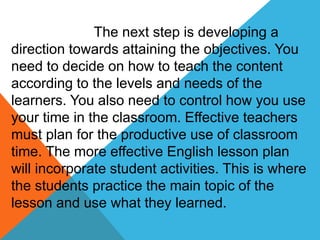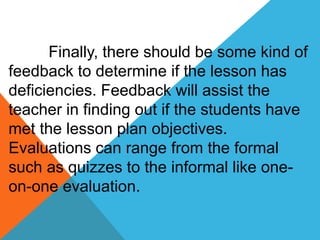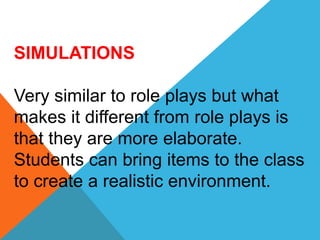The document discusses developing effective speaking lesson plans. It emphasizes that lesson plans should motivate students and provide language practice opportunities. The document outlines steps to create lesson plans such as determining topics, objectives, and activities. It then discusses various classroom activities to develop speaking skills, including discussions, role plays, interviews and more. Suggestions are provided for teachers such as reducing speaking time and providing feedback.





























